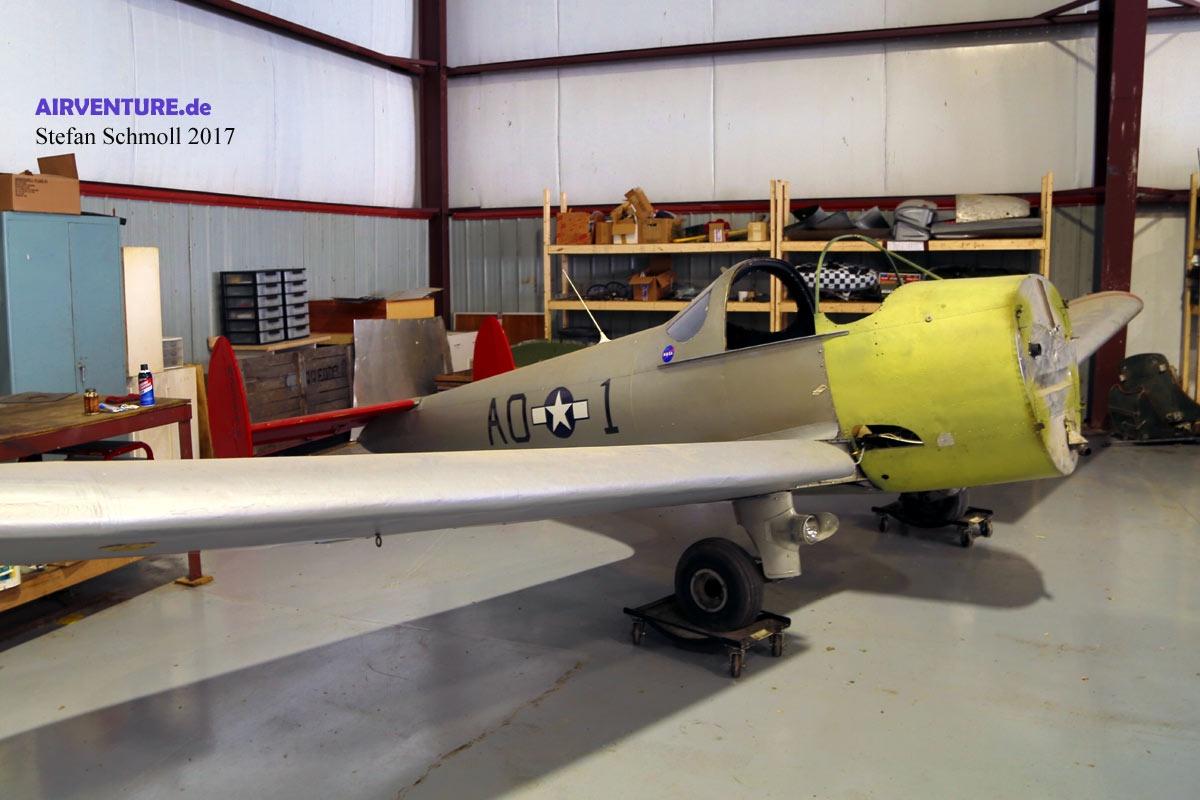
YO-55
415C Ercoupe
"The Coupe"

"The Coupe"
National Warplane Museum
The Erco Ercoupe was an innovative postwar light aircraft designed with safety, simplicity, and accessibility in mind. Developed for civilian use but briefly evaluated by the military under the designation YO-55, the Ercoupe became famous for its unique “spin-proof” design, which made it one of the most forgiving and pilot-friendly aircraft of its era.
Designed by Fred Weick and introduced in 1940, the Ercoupe featured tricycle landing gear, interconnected rudder and aileron controls, and design features intended to prevent stalls and spins — the most common causes of small aircraft accidents. The U.S. military briefly tested the design as the YO-55 for potential liaison and observation duties but ultimately opted for other designs for military use. However, over 5,000 civilian Ercoupes were built after WWII, and the aircraft became a favorite among recreational pilots for its docile handling and safety record.
The Ercoupe’s simple operation made it popular for civilian flight training, recreational flying, and light personal transportation. While it never saw military service beyond testing, its brief evaluation as the YO-55 earned it a place in early military aviation experiments for light utility aircraft.
Erco 415C Ercoupe (Manufacturer’s No. 3014 / N# N2389H)
Built in 1946, this Ercoupe was donated to the National Warplane Museum in the mid-1990s by a Museum member. In a creative and symbolic tribute, the aircraft was painted to represent a Tuskegee Airmen "Red-Tailed" P-51 Mustang, connecting the design’s military evaluation lineage to the legacy of America’s first Black fighter pilots.
In 2011, the aircraft suffered damage during a landing incident and has since been undergoing a gradual restoration by Museum volunteers. Progress has been limited by funding and manpower, but restoration efforts are ongoing, and with sufficient resources, the aircraft could be returned to flying condition. Once restored, it will serve both as an active flying exhibit and a unique educational tool, linking civilian innovation, military experimentation, and the powerful legacy of the Tuskegee Airmen.
Painted in 332nd FG/Tuskegee Airmen Colors
Post-WWII Civilian Aircraft
Ron/Genny Sellars
Method: Donated
Hangar #1
Other aircrafts in our collection


